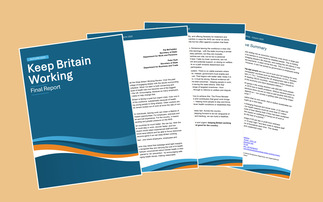Protection markets are failing to evolve and must seize new opportunities if they are not to become dinosaurs in the the digital age, says Emma Walker.
The industry has adapted to the digital world through the development of smartphone apps, responsive website design, use of live chat and the tools to allow customers to switch between online and offline transactions seamlessly.
Contrast that to the current online journey for life insurance, which is largely created for IFAs with some adaptations for a consumer journey. Many insurers still do not even have a direct consumer application processes.
Protection is the only insurance product where we do not, upfront, ask the direct underwriting questions which are relevant to the final premium a customer will pay.
Instead many online journeys rely on the indicative quotation model which offers a representative premium price which does not represent the final premium being paid.
From an aggregator viewpoint, it is wrong in 2013 that customers are unable to see the actual premium they will pay upfront.
Suggesting an indicative cost upfront which may be vastly different from the final premium, not only provides a poor experience for the consumer, but fails to reassure that the product they are buying actually represents value for money. This can only erode trust in these products.
Add the fact that the current journey takes anything from 20 to 60 minutes, and that is before a customer speaks to anyone in the process, is there any wonder why the take up of suitable protection products is so low among consumers.
Imagine in we tried to sell car and home insurance in the same manner?
If we walked into a supermarket expecting to buy a tin of baked beans for 70p, only to be told at the checkout that they will actually cost £1.50, you would walk away, which is exactly what many customers are doing when trying to buy protection – in unacceptable numbers.
The industry needs to work to develop less complicated products which work well for consumer needs but are easy to buy. Removing barriers and opening up the online journey for consumers does not necessarily pose a threat to IFAs.
Done properly, having a mix of advised and non-advised solutions which works together, rather than in competition with each other can only be good for consumers.











